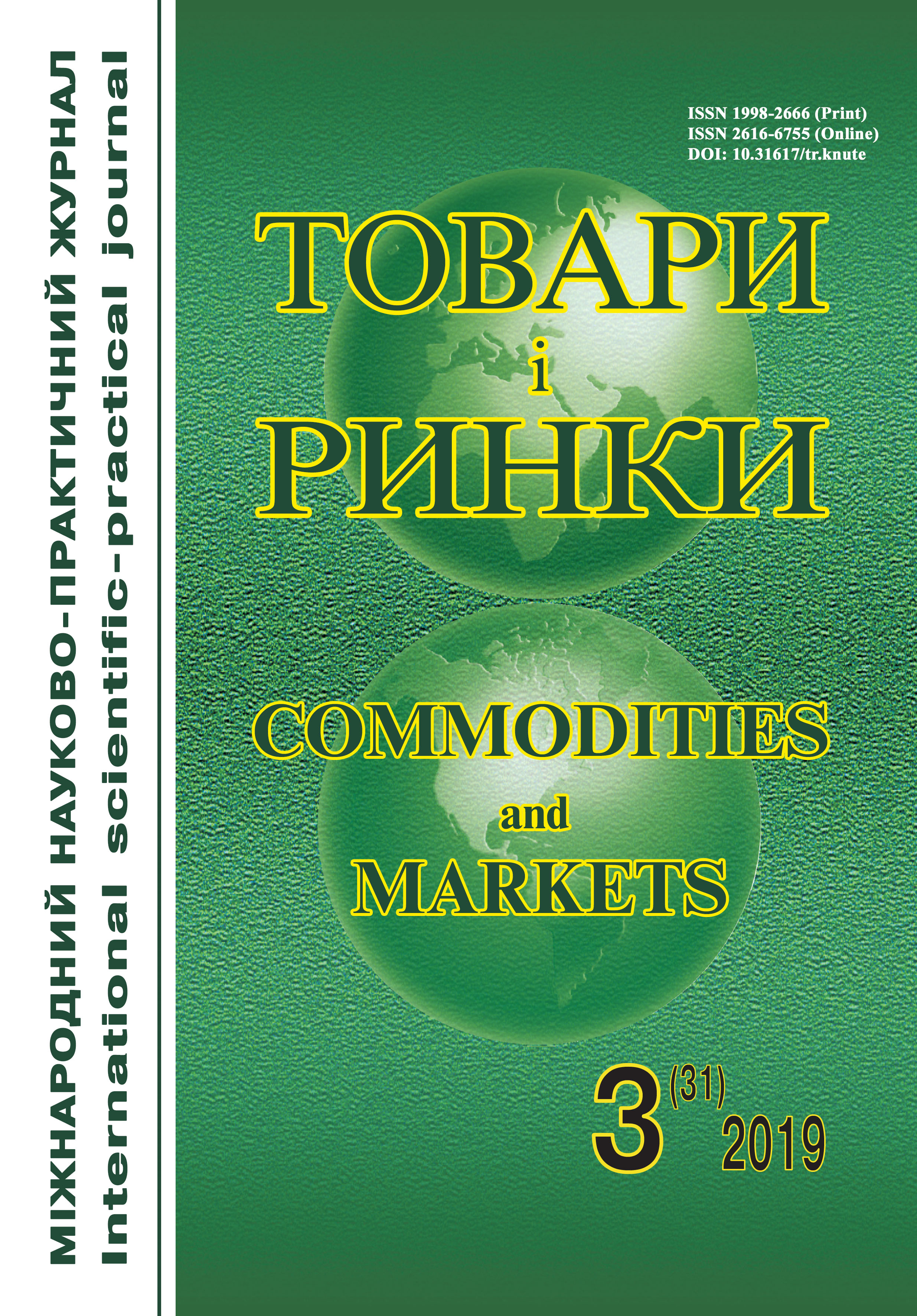Commodity evaluation of rambutan (Nephelium lappaceum L.)
DOI:
https://doi.org/10.31617/tr.knute.2019(31)08Keywords:
rambutan, quality indicators, consumer properties, weight loss, storage durationAbstract
Background. In recent years, the Ukrainian market is saturated with a wide range of tropical and subtropical fruits: papaya, mango, passion fruit, avocado, pitahaya, lychee, pomelo, mangosteen, kumquat, carambola, rambutan, kiwano, tamarillo, pepino, etc., which gradually become an indispensable attribute of the diet of compatriots. Limited information on consumption properties, storage conditions, quality criteria, peculiarities of consumption of different types of exotic fruits adversely affect the increase in consumer demand for them, although its market is quite promising and in the near future it is expected to grow. One of the types of exotic fruits presented on the Ukrainian market is rambutan which comes from Southeast Asia and is also cultivated in South Asia, Equatorial Africa and Central America, Australia.
The aim of this study is a study of changes in the consumption properties of rambutan by a complex of organoleptic and physicochemical indicators of quality.
Materials and methods. The object of study is rambutan (Nephelium lappaceum L.)of the country of origin of Vietnam, which is marketed in Auchan.
Results. It was found that during the first 5 days of storage in the trading hall, the weight loss of rambutan fruits gradually increased due to the evaporation of moisture and amounted to 8.27 % on the 5th day. On the 15th day of storage they increased to 34.78 %, which negatively affected the appearance of the fruit.
Conclusion. During storage, changes in the consumption properties of rambutan occur, which is characteristic for products of plant origin, in which physical, chemical, biochemical, microbiological processes continue to occur. A significant reduction in the consumption properties of rambutan fruits is set for 15 days of storage, which does not correspond to the length of storage recommended by the manufacturer.
References
Latifah, M. N., Abdullah, H., Aziz, I., Fauziah, O., & Talib, Y. (2009). Quality changes of rambutan fruit in different packaging system. J. Trop. Agric. and Fd. Sc. (Vol. 37 (2), (pp. 143-151) [in English].
Koltunov, V. A., & Romanenko, O. L. Tovaroznavstvo. (2012). Subtropichni ta tropichni plody [Commodity Science. Subtropical and tropical fruits]. Kyi'v: Kyi'vs'kyj nacional'nyj torgovel'no-ekonomichnyj universytet [in Ukrainian].
Ponomar'ov, P. H., Doncova, I. V., & Girnjak, L. I. (2006). Tovaroznavstvo tropichnyh i subtropichnyh fruktiv [Commodity science of tropical and subtropical fruits]. Kyi'v: CUL. URL: http://catalog.uccu.org.ua/opacunicode/index.php?url=/notices/index/IdNotice:112671/Source:default [in Ukrainian].
Wall, Marisa M. (2006). Ascorbic acid and mineral composition of longan (Dimocarpus longan), lychee (Litchi chinensis) and rambutan (Nephelium lappaceum) cultivars grown in Hawaii. Journal of Food Composition and Analysis. (Vol. 19). (Iss. 6–7), (pp. 655-663). DOI: https://doi.org/10.1016/j.jfca.2005.12.001[in English].
O'Hare, T. J. (1995). Postharvest physiology and storage of rambutan. Postharvest Biology and Technology. (Vol. 6). (Iss. 3–4), (pp. 189-199). DOI: https://doi.org/10.1016/0925-5214(95)0002. DOI: https://doi.org/10.1016/0925-5214(95)00022-X [in English].
Shao, Y., Xie, J., Chen, P., & Li, W. (2013). Changes in some chemical components and in the physiology of rambutan fruit (Nephelium lappaceum L.) as affected by storage temperature and packing material. Fruits. (Vol. 68 (1), (pp. 15-24). DOI: https://doi.org/10.1051/fruits/2012045 [in English].
Metody vyznachennja pokaznykiv jakosti produkcii' roslynnyctva [Methods for determining the quality of crop production]. (2016). Ministerstvo agrarnoi' polityky ta prodovol'stva Ukrai'ny, Ukrai'ns'kyj instytut ekspertyzy sortiv roslyn [in Ukrainian].
Produkty pererabotki plodov i ovoshhej. Metod opredelenija rastvorimyh suhih veshhestv ili vlagi [Products of processing fruits and vegetables. Method for determination of soluble solids or moisture]. (1990). GOST 28562–90. Moscow: Izdatel'stvo standartov [in Russian].
Produkty pererabotki plodov i ovoshhej. Refraktometricheskij metod opredelenija rastvorimyh suhih veshhestv [Products of processing fruits and vegetables. Refractometric method for the determination of soluble solids] (2010). GOST 28562–90. Moscow: Standartinform [in Russian].
Produkty pererabotki plodov i ovoshhej. Metody opredelenija vitamina С [Products of processing fruits and vegetables. Vitamin C Determination Methods]. (1989). GOST 24556–89. Moscow: Izdatel'stvo standartov [in Russian].
Produkty pereroblennja fruktiv ta ovochiv Metody vyznachennja tytrovanoi' kyslotnosti [Fruits and vegetables processing products Methods for determination of titrated acidity]. (2009). DSTU 4957:2008. Kyi'v: Derzhspozhyvstandart Ukrai'ny [in Ukrainian].
Produkty pereroblennja fruktiv ta ovochiv. Metody vyznachennja cukriv [Products of processing fruits and vegetables. Methods for determining sugars]. (2009). DSTU 4954:2008. Kyi'v: Derzhspozhyvstandart Ukrai'ny [in Ukrainian].



